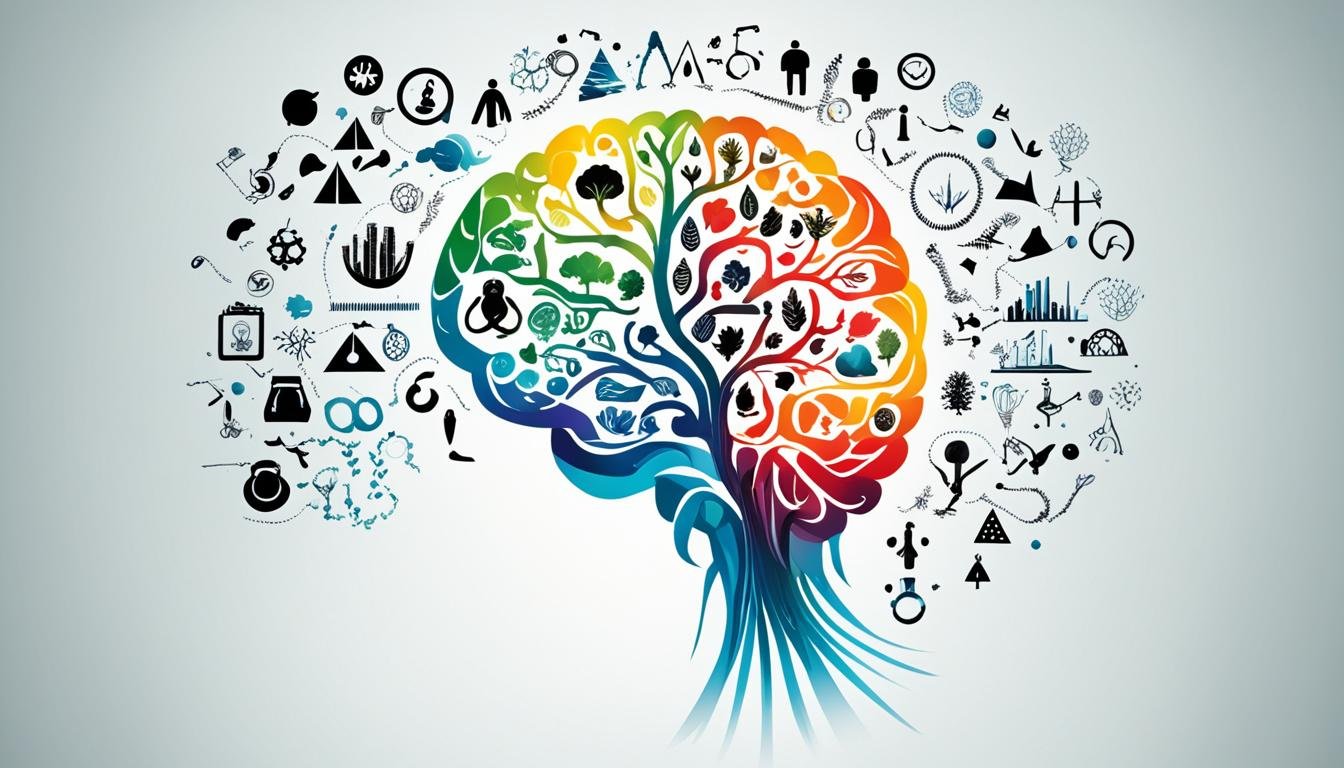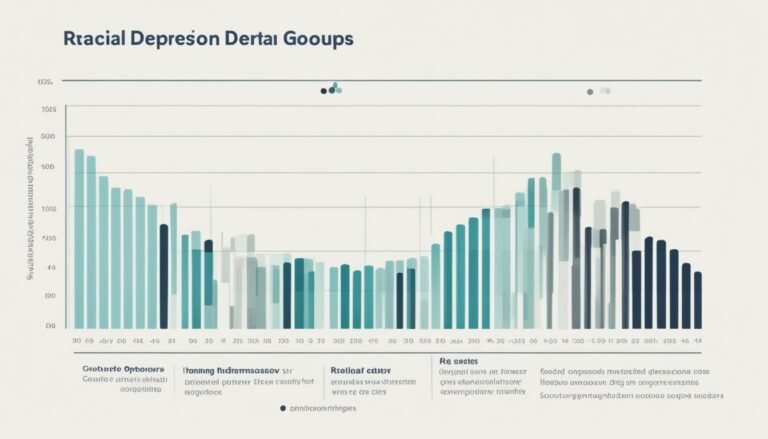What is the most popular mental health problem?
According to the CDC, approximately 1 in every 5 Americans is currently living with a mental illness. The three most common diagnoses are anxiety disorders, depression, and post-traumatic stress disorder (PTSD). These three conditions make up around 30 percent of all diagnoses of mental illness in America.
Key Takeaways:
- Anxiety disorders, depression, and PTSD are the most prevalent mental health conditions in the United States.
- Approximately 1 in 5 Americans is living with a mental illness.
- Anxiety disorders are characterized by excessive fear and worry, while depression manifests as persistent feelings of sadness and hopelessness.
- PTSD is caused by exposure to trauma and can be triggered by vivid flashbacks and avoidance behaviors.
- Effective treatment options, such as therapy and medication, exist for these common mental illnesses.
Anxiety Disorders – The Most Prevalent Mental Health Problem
Anxiety disorders are among the most common mental health disorders, affecting a large segment of the population. These disorders are characterized by excessive fear or worry that can significantly impair a person’s daily life and functioning.
Individuals with anxiety disorders experience a range of symptoms, including difficulty concentrating due to excessive worrying, feeling weak and tired, and having a prolonged sense of nervousness or fear. These symptoms can be debilitating and affect various aspects of a person’s life, including work, relationships, and general well-being.
There are different types of anxiety disorders, each with its own specific characteristics. Some of the most common types include:
- Generalized Anxiety Disorder (GAD): Individuals with GAD experience excessive worry and anxiety about various aspects of their life, such as work, health, or family.
- Panic Disorder: People with panic disorder experience recurrent panic attacks, which are sudden and intense episodes of fear that can be accompanied by physical symptoms like rapid heartbeat, chest pain, or shortness of breath.
- Social Anxiety Disorder: This disorder is characterized by an intense fear of social situations and being scrutinized or judged by others.
- Phobia-Based Anxieties: Phobias are specific fears of particular objects or situations, such as heights, spiders, or flying. These fears can lead to avoidance behaviors and significant distress.
Diagnosing anxiety disorders involves a thorough evaluation by a mental health professional, who will assess the symptoms, duration, and impact on daily functioning. Treatment options for anxiety disorders include psychotherapy, medication, and other complementary health approaches. Psychotherapy, such as cognitive-behavioral therapy (CBT), helps individuals identify and change negative thinking patterns and develop effective coping strategies. Medications, such as selective serotonin reuptake inhibitors (SSRIs), may be prescribed to manage symptoms. Additionally, alternative approaches like relaxation techniques, meditation, and exercise can also be beneficial in managing anxiety.
Anxiety disorders are highly treatable, and with the right interventions, individuals can experience significant improvement in their symptoms and quality of life.
Note: Image above is for illustrative purposes only and does not represent a specific anxiety disorder.
Depression – A Widespread Mental Health Challenge
Depression is a prevalent mental illness that affects over 17 million American adults every year. It is characterized by a persistent feeling of sadness and a loss of interest or pleasure in activities. To be diagnosed with depression, individuals must have experienced a depressive episode that lasts for more than two weeks. This episode is marked by a combination of emotional, cognitive, and physical symptoms.
“Depression is like a dark cloud that hovers over every aspect of your life. It drains you of all energy and makes even the simplest tasks seem impossible.”
The symptoms of depression can vary from person to person but commonly include feelings of hopelessness, a general lack of energy, changes in appetite or weight, difficulty concentrating or making decisions, and recurring thoughts of death or suicide. These symptoms can significantly impact a person’s daily functioning, relationships, and overall well-being.
Recognizing the Symptoms:
- Feelings of sadness, emptiness, or hopelessness
- Loss of interest or pleasure in activities
- Changes in appetite or weight
- Trouble sleeping or excessive sleeping
- Feeling restless or agitated
- Fatigue or loss of energy
- Difficulty concentrating or making decisions
- Recurring thoughts of death or suicide
Treatment options for depression generally include a combination of therapy, medication, and lifestyle changes. Therapy, such as cognitive-behavioral therapy (CBT) or interpersonal therapy (IPT), helps individuals understand and manage their thoughts, emotions, and behaviors. Medications, such as selective serotonin reuptake inhibitors (SSRIs) or serotonin-norepinephrine reuptake inhibitors (SNRIs), can help regulate brain chemicals that affect mood. Adopting a healthy lifestyle, including regular exercise, a balanced diet, and sufficient sleep, can also have a positive impact on managing depression.
It is important to note that while there is no cure for depression, recent advancements in medicine and therapy techniques have made it highly treatable. With the right support and treatment, individuals can regain their quality of life and find hope in their journey towards recovery.
Treatment Options for Depression:
| Treatment Option | Description |
|---|---|
| Therapy | Cognitive-behavioral therapy (CBT), interpersonal therapy (IPT), or other forms of therapy help individuals address negative thoughts, emotions, and behaviors associated with depression. |
| Medication | Antidepressant medications, such as selective serotonin reuptake inhibitors (SSRIs) or serotonin-norepinephrine reuptake inhibitors (SNRIs), help regulate brain chemicals that impact mood. |
| Lifestyle Changes | Adopting a healthy lifestyle, including regular exercise, a balanced diet, sufficient sleep, and stress management techniques, can improve overall well-being and support depression management. |

Seeking professional help and creating a strong support system are vital steps in the journey towards managing depression. If you or someone you know is experiencing symptoms of depression, it is important to reach out to a healthcare professional or a mental health provider for guidance and support.
Post-Traumatic Stress Disorder (PTSD) – A Frequently Diagnosed Mental Health Disorder
Post-Traumatic Stress Disorder (PTSD) is a mental health condition that frequently occurs after a person experiences a traumatic event. It can affect individuals from all walks of life, including veterans, survivors of accidents or natural disasters, and victims of abuse or violence. PTSD is characterized by a range of distressing symptoms that can significantly impact a person’s daily life.
Understanding PTSD Symptoms
- Flashbacks: People with PTSD often experience vivid and distressing flashbacks of the traumatic event. These flashbacks can feel as though the event is happening again, leading to intense fear and anxiety.
- Avoidance: Individuals with PTSD may go to great lengths to avoid situations, people, or places that remind them of the traumatic event. This avoidance can disrupt their normal routines and limit their ability to engage in everyday activities.
- Memory Problems: Many people with PTSD struggle with memory problems, particularly when it comes to recalling specific details of the traumatic event. This difficulty in memory retrieval can be frustrating and contribute to feelings of confusion or disorientation.
- Emotional Numbing: PTSD can lead to emotional numbing, causing individuals to feel detached or emotionally distant from others. They may also experience a reduction in their ability to experience positive emotions.
- Hypervigilance: People with PTSD are often on high alert, constantly scanning their environment for potential threats. This hypervigilance can lead to feelings of irritability, restlessness, and difficulty concentrating.
These symptoms can significantly impair a person’s quality of life and interfere with their relationships, work, and overall well-being. Seeking timely and appropriate treatment is crucial for individuals with PTSD to manage these symptoms effectively.
Effective Treatment Options
Fortunately, there are various treatment options available for individuals living with PTSD. These options aim to alleviate symptoms, improve coping mechanisms, and promote overall recovery. The most common treatment approaches for PTSD include:
- Psychotherapy: Psychotherapy, also known as talk therapy, is a key component of PTSD treatment. Cognitive-behavioral therapy (CBT) is a widely used approach that helps individuals manage their thoughts, emotions, and behaviors related to the traumatic event. Eye Movement Desensitization and Reprocessing (EMDR) is another form of therapy that can effectively reduce the distress associated with traumatic memories.
- Medications: In some cases, medication may be prescribed to help manage the symptoms of PTSD. Antidepressant medications, such as selective serotonin reuptake inhibitors (SSRIs), can help regulate mood and reduce anxiety. Other medications, such as prazosin, may be prescribed to alleviate nightmares and improve sleep.
It is important to note that the effectiveness of treatment may vary from individual to individual. A combination of medication and therapy is often the most beneficial approach for managing PTSD symptoms. Additionally, support from loved ones, participation in support groups, and self-care practices can play a significant role in the recovery process.
| Treatment Options for PTSD | Benefits |
|---|---|
| Psychotherapy (Cognitive-Behavioral Therapy, EMDR) |
|
| Medications (Antidepressants, Prazosin) |
|
Conclusion
Mental disorders, including anxiety disorders, depression, and post-traumatic stress disorder (PTSD), have a significant prevalence in society, affecting millions of people across the United States. These conditions can have a profound impact on individuals’ lives, making it essential to address them effectively.
While there are effective prevention and treatment options available for these mental disorders, access to care remains limited for many individuals. This limitation prevents them from receiving the necessary support and treatment they need to manage their conditions and improve their overall well-being.
To address this issue, it is crucial for health systems to prioritize and adequately respond to the needs of those with mental illnesses. This includes providing accessible and quality care that encompasses a range of treatment options, such as therapy, medication, and other complementary approaches.
In addition to improving access to care, efforts to reduce the stigma, discrimination, and violations of human rights associated with mental disorders are also essential. By raising awareness and fostering understanding, we can create a more inclusive and supportive society for individuals living with mental health challenges.
FAQ
What are the most common mental health disorders?
The three most common mental health disorders are anxiety disorders, depression, and post-traumatic stress disorder (PTSD).
What are anxiety disorders characterized by?
Anxiety disorders are characterized by underlying feelings of extreme fear or worry.
What are the common symptoms of anxiety disorders?
The common symptoms of anxiety disorders include difficulty concentrating due to excessive worrying, feeling weak and tired, and having a prolonged sense of nervousness or fear.
What are the different types of anxiety disorders?
The different types of anxiety disorders include generalized anxiety disorder, panic disorder, social anxiety disorder, and phobia-based anxieties.
How are anxiety disorders treated?
Treatment options for anxiety disorders include psychotherapy, medications, and other complementary health approaches.
How many Americans are affected by depression?
Over 17 million American adults are affected by depression every year.
What are the symptoms of depression?
Symptoms of depression include feelings of hopelessness, a general lack of energy, and thoughts of death and suicide.
How is depression treated?
Treatment options for depression include therapy, medicine, or a combination of both.
What is PTSD caused by?
PTSD is caused by being exposed to trauma.
What are the symptoms of PTSD?
Symptoms of PTSD include experiencing vivid flashbacks of the traumatizing event, avoidance of situations or places that may remind the individual of the event, and having trouble recalling the experience altogether.
How is PTSD treated?
Treatment options for PTSD include various psychotherapies and medications.
How prevalent are mental disorders in society?
Mental disorders, including anxiety disorders, depression, and PTSD, are prevalent in society, affecting millions of people.
What can be done to address mental disorders?
Efforts to reduce stigma, discrimination, and violations of human rights associated with mental disorders are crucial, as well as providing accessible and quality care for individuals with mental illnesses.






